Films with theme "Films about the labor movement", sorted by revenue

Tempête sous un crâne (2012)
, 1h20Origin France
Genres Documentary
Themes L'adolescence, La banlieue française, Films about education, Films about children, Films about the labor movement, Documentaire sur le monde du travail, L'enseignement secondaire en France
Alice enseigne le français. Isabelle, les arts plastiques. Elles ont une classe en commun. Les 4C.
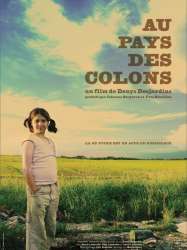
The Great Resistance (2007)
, 1h15Directed by Denys Desjardins
Origin Quebec
Genres Documentary
Themes Environmental films, Films about the labor movement, Documentary films about business, Documentary films about environmental issues, Documentaire sur le monde du travail
In the 1930s, in the throes of the Great Depression, the government of Quebec relocated more than 80,000 citizens to found a new settlement in the virgin forests of Quebec’s Abitibi region. After enduring backbreaking work to clear the land, however, many left, seeking a better life in the city or as labourers for the large corporations that had come to exploit the North’s valuable resources. The Lalancette family, however, have persisted in forging their future on the land from one generation to the next, earning their keep from farming, and defying the constraints of globalization and the mining and forestry companies that control the area. Revisiting the heritage of Quebec filmmakers who documented Abitibi, following in the footsteps of Pierre Perrault, among others, this documentary traces a defining chapter of Quebec history and raises fundamental questions about regional development.
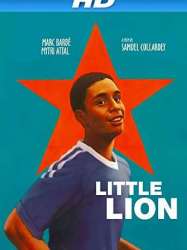
Little Lion (2013)
, 1h42Directed by Samuel Collardey
Origin France
Genres Drama
Themes L'adolescence, Films about children, Films about immigration, Sports films, Films about the labor movement, La précarité, Association football films, L'émigration
Actors Marc Barbé, Anne Coesens, Marc Berman, Jean-François Stévenin, Tatiana Rojo
Dans un village du Sénégal, le jeune Mitri, élevé par sa grand-mère, rêve de devenir une vedette du football. Repéré par un détecteur de talents, il peut embarquer pour la France, grâce à l'argent du verger familial et de l'association au sein de laquelle les femmes du village collectent leurs économies. Le contrat qu'il doit signer en France doit permettre à sa grand-mère de rembourser l'argent emprunté.
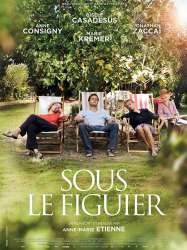
Sous le figuier (2013)
Directed by Anne-Marie Étienne
Origin France
Genres Drama, Comedy
Themes Films about the labor movement, Vieillesse
Actors Gisèle Casadesus, Anne Consigny, Jonathan Zaccaï, Marie Kremer, Éric Larcin
Nathalie, son meilleur ami Christophe et Joëlle, une jeune mère de famille, sont trois adultes en crise sur le plan professionnel et personnel qui se retrouvent ensemble un été pour accompagner Selma, une vieille dame de 95 ans, voyante amateur, qui est sur le point de mourir, dans sa grande maison de vacances.

The Real Life of Teachers (2013)
, 1h40Directed by Emmanuel Klotz
Origin France
Genres Comedy
Themes L'adolescence, La banlieue française, Films about education, Films about children, La provence, Films about the labor movement, L'enseignement secondaire en France
Actors Jessica Errero, Lucien Jean-Baptiste, Audrey Fleurot, Catherine Hosmalin, Vincent Desagnat, Franck Adrien
Albert et JM sont deux lascars contraints de rejoindre l'équipe du journal du collège Émile Zola. Après avoir sympathisé avec les trois autres élèves (Juju, Mousse et Sissi), ils décident de créer un site : « La vraie vie des profs » ou « VVDP ». Ils vont ainsi plonger dans la vie intime de leurs professeurs...

El Ejido, la loi du profit (2006)
, 1h21Origin Belgique
Genres Documentary
Themes Cooking films, Films about the labor movement, Documentaire sur la cuisine, Documentaire sur la malbouffe, Documentaire sur le monde du travail
Today, the formerly-desertic region of Almeria in southern Spain produces one third of Europe's winter consumption of fruits and vegetables and reaps two thirds of the country’s farm profits. This 'economic miracle' in a greenhouse relies on the labour of nearly 80.000 immigrants, half of whom do not have working papers. In a destroyed environment where the air is vitiated by pesticides and ground water is running out, the village of El Ejido illustrates, almost to the point of caricature, this industrial exploitation of men and the land encouraged by globalisation. Driss, Moussaid and Djibril are day-labourers there, working for a pittance and, as is the case with most of their peers, without a working contract. They stay in chabolas, small constructions made of cardboard and plastic, without water or electricity. It is a near-slavery that fills our tables.
 , 1h58
, 1h58Directed by Christian Rouaud
Origin France
Genres Documentary
Themes Films about the labor movement, Documentaire sur le monde du travail
Le film raconte à travers les témoignages d'anciens ouvriers l'organisation de la lutte des Lip contre les suppressions de poste d'avril 1973 au printemps 1974. Le film s'est voulu plus qu'un simple documentaire, en intégrant volontairement des aspects historiques et aussi politiques : une remontée aux origines de la crise de l'emploi en Occident, et un éloge de la révolte ayant pour cadre l'année 1973, marquant la rupture entre les Trente Glorieuses et le début de ce que Charles Piaget appelle « les années de honte », celles du chômage de masse. On retrouve des grandes figures du combat tels que les responsables CFDT (Charles Piaget, Roland Vittot, Raymond Burgy, Michel Jeanningros, Fatima Demougeot, Jeannine Pierre-Émile), le fondateur du comité d'action (Jean Raguénès, prêtre-ouvrier dominicain d'extrême gauche), et la déléguée CGT (Noëlle Dartevelle), le repreneur de l'usine Lip Claude Neuschwander et même Jean Charbonnel ministre de l'Industrie de l'époque. Alternant avec les entretiens des principaux protagonistes, le film insère des images d'archives de l'époque. Le documentaire met l'accent sur l'action plus que l'émotion, interrogeant des héros et non de simples témoins ; le tout est conjugué au présent. Les séquences s'interrompent avant que tout soit dit, ce qui montre une volonté réussie de créer une note de suspense.
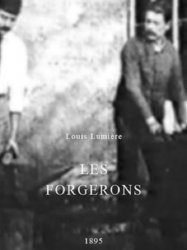
Directed by Auguste et Louis Lumière
Origin France
Genres Documentary
Themes Films about the labor movement, Documentaire sur le monde du travail
Two men stand working as blacksmiths. The one on the left of the screen repeatedly hammers an anvil while the man on the right winds a device. The man of the left then removes the metal he was hammering and places it into a bucket of water. At the end of the film a third man walks onto the screen from the left, with a wine glass and bottle in hand, hands the glass to the smith at the anvil, and begins to pour him a drink.

Directed by Auguste et Louis Lumière
Origin France
Genres Documentary
Themes Films about the labor movement, Documentaire sur le monde du travail
The film consists of a single scene in which workers leave the Lumière factory. The workers are mostly female who exit the large building 25 Rue St. Victor, Montplaisir on the outskirts of Lyon, France, as if they had just finished a day's work.
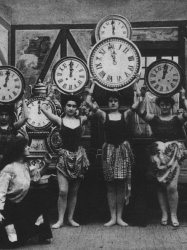 , 6minutes
, 6minutesDirected by Georges Méliès
Origin France
Genres Drama, Science fiction, Fantasy, Horror, Romance
Themes Films about children, Films about the labor movement, Children's films
Actors Georges Méliès, Jehanne d'Alcy
Le film illustre l'essentiel de l'histoire de Cendrillon dans la version de Charles Perrault.
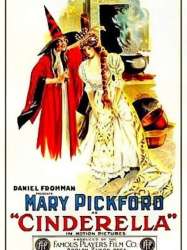
Cinderella (1914)
, 52minutesDirected by James Kirkwood Sr.
Origin USA
Genres Drama, Fantastic, Fantasy
Themes Films about children, Films about magic and magicians, Films about the labor movement, Children's films
Actors Mary Pickford, Owen Moore
Cinderella is a kind young woman who lives with her wicked stepmotherand ugly stepsisters plus her evil father. They abuse her and use her as the house maid. Cinderella thinks she's all alone in the world, but doesn't know a fairy godmother is constantly helping her. One day, she is collecting wood from the forest and meets Prince Charming. They immediately fall in love with each other, but lose contact. Soon, a ball is arranged by the prince to look for his future wife. The stepsisters think they make a great chance in being chosen by the prince. Cinderella wants to go as well, but isn't allowed to by her cruel family.
 , 1h14
, 1h14Origin USA
Genres Musical theatre, Fantasy, Animation, Romance
Themes Films about children, Films about magic and magicians, Films about the labor movement, Time travel films, Les fées, Musical films, Children's films
Actors Jennifer Hale, Lola Sanchez, Christopher Daniel Barnes, Susanne Blakeslee, Lesli Margherita, Corey Burton
At the Tremaine mansion, Cinderella's stepsisters Anastasia and Drizella are bitterly doing Cinderella's old chores. Anastasia wanders off to avoid work and stumbles upon a picnic being held by Cinderella, Prince Charming and the Fairy Godmother to celebrate Cinderella and the Prince's one-year anniversary. When the Fairy Godmother drops her wand, Anastasia takes it, and in the ensuing struggle Anastasia accidentally turns the Fairy Godmother to stone. Anastasia flees the scene, taking the wand to her sister and mother.

We Feed the World (2005)
, 1h36Directed by Erwin Wagenhofer
Origin Austria
Genres Documentary
Themes Cooking films, Environmental films, La mondialisation, Films about the labor movement, Documentaire sur la cuisine, Documentary films about business, Documentaire sur l'altermondialisme, Documentary films about environmental issues, Documentaire sur la malbouffe, Documentaire sur le monde paysan, Documentary films about health care, Documentaire sur le monde du travail
Avec We Feed the World, le documentariste Erwin Wagenhofer propose aux spectateurs un regard sur l'agriculture mondiale moderne. En passant par la Roumanie, l'Autriche, le Brésil, la France et l'Espagne, son enquête se focalise sur la manière dont est fabriqué ce qui arrive dans notre assiette. Il montre que la domination du Nord sur le Sud est prégnante. Comment est-il possible qu'en Afrique l'on achète des produits européens ou asiatiques comme le poulet thaïlandais ? Le réalisateur présente une face peu connue de la mondialisation : en achetant un poulet industriel, on contribue au défrichement de l'Amazonie car le Brésil déforeste pour cultiver le soja qui sert à nourrir les volailles élevées en batterie (90 % de la production de soja du Brésil est exportée). Le documentaire souligne également la différence entre industrie agroalimentaire et petite exploitation. We Feed the World adopte un style « coup de poing » visant à éveiller les consciences.
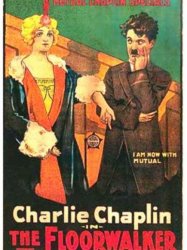
The Floorwalker (1916)
Directed by Charlie Chaplin
Origin USA
Genres Comedy
Themes Films about the labor movement
Actors Eric Campbell, Edna Purviance, Charlie Chaplin, Lloyd Bacon, Albert Austin, Charlotte Mineau
Charlot sème la zizanie dans un grand magasin. Il participe, involontairement, à l'arrestation du directeur et du chef de rayon de ce magasin, coupables de malversations multiples.

The Labour Leader (1917)
Directed by Thomas Bentley
Origin United-kingdom
Themes Films about the labor movement, Political films
Actors Fred Groves, Fay Compton, Owen Nares
After his friend impregnates a laundress, a socialist marries her while navigating his own rise to become a Labour Party Member of Parliament.
 Connection
Connection